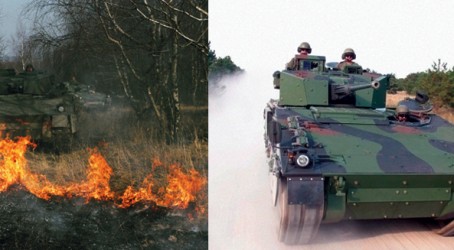Articles
According to defence firm General Dynamics, reports of the death of the British armoured vehicle have been greatly exaggerated.
After months of agonising, the Ministry of Defence has selected General Dynamics UK to build its Fres (Future rapid effect system) Scout vehicle, passing over the BAE Systems bid. Fres is the programme to replace 3,000 British Army armoured vehicles with better networked, better protected, better armed and more flexible vehicles.
It’s not an exaggeration to suggest that Fres is the most controversial of the MoD’s current crop of programmes. Its development history has been protracted, its specification subjected to intense scrutiny. It is expensive at a time of stringent budgets but is a lifeline to part of the UK’s defence manufacturing capability. If it weren’t for the other expensive and controversial projects – the fighter jets, aircraft carriers, nuclear submarines and helicopters – people might be shocked by the way Fres has gestated.
BAE Systems reacted to the Fres contract loss by announcing the closure of its Leicester engineering site for armoured vehicles. This was reported amid warnings of the demise of British defence capabilities.
To some it may seem like General Dynamics has come out of nowhere. On the contrary, says, Mark Douglas, vice-president of General Dynamics UK, the firm has been in the UK in various forms for almost 50 years. It employs 1,600 people and is headquartered in South Wales.
The Fres Scout contract builds on the “rip out and refit” work the company has performed over the last decade on the army’s entire 13,500-vehicle fleet to upgrade communications, fire control, sensors, radar and electro-optics. Part of the Bowman contract, Douglas says the expertise built up by this “digitisation” of the army’s vehicle fleet is a big part of the reason it won the Fres bid, with the vital electronic architecture of the new digital communications system going into the new vehicle. “We exceeded each of the MoD’s four key areas with a 38-tonne vehicle with a clear growth path. BAE Systems didn’t even answer the exam question,” says Douglas.
He adds that GDUK’s bid will follow a manufacturing plan that increases engineering jobs in the UK’s armoured vehicle sector. Although the first Fres Scout demonstrators will be built in GD’s Spanish factories along with the vehicle hull, the rest – 80% – will be constructed in South Wales, says GDUK. The programme will sustain and create more than 10,700 jobs.
“There is export potential built in from the outset – there are countries that will only buy what the British Army use,” says Douglas.
The Fres series of vehicles will be the workhorse of the British Army after it is introduced in 2012. The initial Scout is a medium-weight expeditionary battle vehicle but the Austrian Spanish Cooperation Development base can be configured for various combat roles, giving it the capacity to carry the 120mm gun that tanks are equipped with, for example, or bridge construction equipment. It is better armoured against explosives.
John Abunassar, chief engineer for the Scout project, says: “The base is as lightweight as possible but its subsystems are engineered to operate with a payload of up to 42 tonnes. The ground pressure is low through the special attention we paid to the running gears. This enables the vehicles to cross different terrains – ice and snow, desert, wet and muddy.
“The design was to satisfy the breadth of simple and complex roles, medium through to heavyweight with a single platform. This meant a careful balancing of the three design intentions – mapping its mobility against its survivability and capacity.”
About 180 engineers and engineers in the UK have worked on GDUK’s Fres design since 2007, and Abunassar believes that the prospects for any engineer involved in the design and build of armoured vehicles are good. “The whole of the systems design and solution is driven out of the UK, including all the specialist domains such as the electronic architecture, the optronics, the survivability. The majority of the complex systems are built in the UK.”
